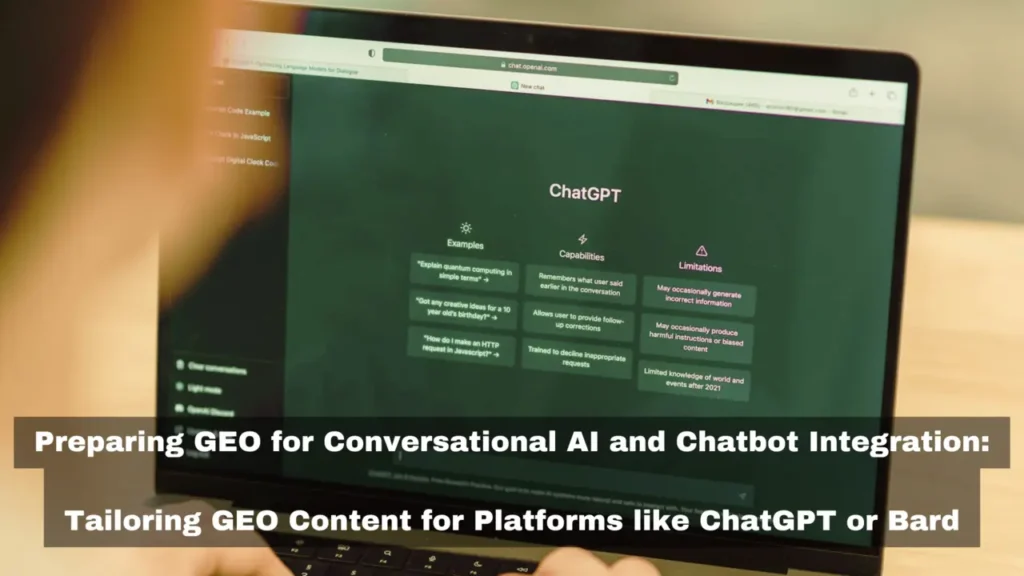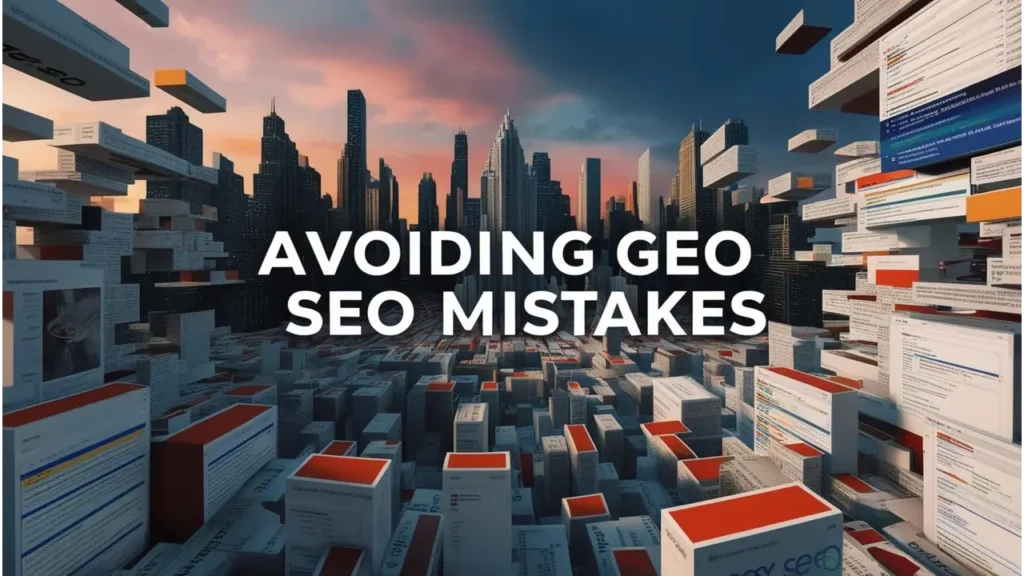Introduction: The SEO Game Is Evolving
There was a time when SEO was all about keywords, backlinks, and page speed. You’d climb your way up Google’s SERP mountain, hoping to sit on the throne of Page One. But here’s the plot twist: the game board has changed.
Now, search is less about ten blue links and more about one definitive answer. Users ask, and AI answers. Platforms like ChatGPT, Perplexity, Gemini, and Claude are reshaping the landscape.
“Search is no longer just about Google rankings — it’s about where your brand appears in AI-generated conversations.”
Welcome to the age of AI SEO. Welcome to Generative Engine Optimization (GEO). And meet the new power player: OMG AI.
Key Takeaways
- Traditional SEO is evolving into Generative Engine Optimization (GEO) — optimizing for AI-generated answers.
- AI doesn’t show search results, it gives answers — your brand either gets mentioned or forgotten.
- Traditional tools don’t track AI performance — platforms like OMG AI fill this gap.
- OMG AI helps measure AI mentions, sentiment, and visibility across models like ChatGPT, Claude, and Perplexity.
- Real-world case studies show how AI visibility directly impacts traffic, reputation, and conversions.
- AI SEO is not a replacement, but a critical new layer alongside traditional SEO.
- Businesses must optimize content clarity, trustworthiness, and authority to influence AI responses.
What Is AI SEO (Generative Engine Optimization)?
Think of traditional SEO as playing chess. You move pieces strategically, based on fixed rules. But AI SEO? That’s like playing 4D chess with a shape-shifting board.
Generative Engine Optimization (GEO) is the practice of optimizing your brand’s presence inside AI-generated responses. AI doesn’t give you a list of links. It gives you the answer — often without any link at all.
And that answer might:
- Mention your brand (or not).
- Recommend a competitor.
- Quote a source that has more structured data.
Key Differences:
| Traditional SEO | AI SEO (GEO) |
| Ranks links on SERPs | Generates synthesized answers |
| Focuses on clicks | Focuses on mentions & citations |
| Optimized for keywords | Optimized for clarity, context, trust |
| Backlink-centric | Reputation- and sentiment-centric |
It’s a shift from searching to deciding.
GEO vs. Traditional SEO: A Visual Comparison
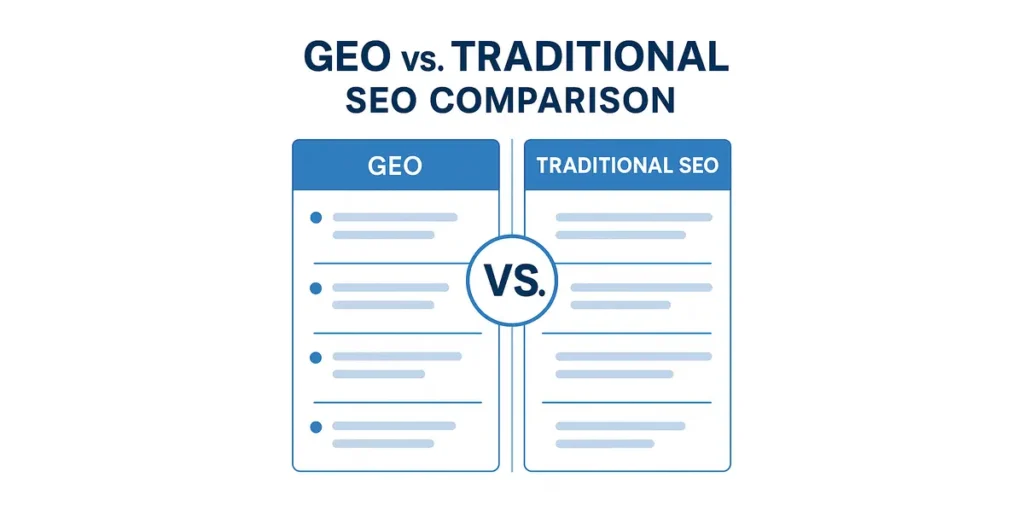
Understanding the shift from Traditional SEO to Generative Engine Optimization (GEO) is crucial for staying ahead in the evolving digital landscape. Here’s a quick comparison to help you see how the game has changed:
| Aspect | Traditional SEO | AI SEO (GEO) |
|---|---|---|
| Goal | Rank high in search engine results pages | Be mentioned and trusted in AI-generated answers |
| Focus | Keywords, backlinks, technical optimization | Clarity, authority, brand sentiment, structured content |
| Measurement | SERP rankings, clicks, bounce rates | AI mentions, sentiment, prominence in AI responses |
| Search Interface | 10 blue links on Google | One synthesized answer from AI assistants |
| User Behavior | Click-based browsing | Direct decision-making based on AI output |
| Optimization Tools | Keyword planners, backlink checkers | Prompt testing tools, AI visibility trackers like OMG AI |
| Content Strategy | Long-form, keyword-rich content | Conversational, authoritative, and AI-friendly summaries |
In short: SEO gets you found. GEO gets you mentioned. Both matter — but in an AI-first world, GEO is your ticket to influence.
Why Traditional SEO Tools Fall Short
Your trusty keyword rank tracker? It’s blind in the AI jungle. Here’s why:
- AI models don’t use traditional SERPs.
- AI responses shift depending on prompt context.
- Citations, when present, are inconsistent.
- Brand mentions aren’t always linked.
Traditional SEO tools can’t:
- Tell you how often ChatGPT recommends you.
- Measure sentiment in Claude’s responses.
- Track if Perplexity lists you first or last.
“You can’t optimize what you can’t see. And right now, most brands are invisible in AI-powered answers.”
How Tools Like OMG AI Are Filling the Gap
Enter OMG AI — your visibility radar for the AI frontier.
Imagine Google Search Console… but for ChatGPT, Gemini, and Claude. OMG AI measures how AI models perceive, rank, and respond with your brand.
Key Features:
- AI Brand Mention Tracking – See how often your brand shows up across AI platforms.
- Sentiment Analysis – Know whether AI describes your brand positively, negatively, or with indifference.
- Prompt-Based Testing – Feed AI specific prompts and simulate real-world queries.
- Competitor Benchmarking – Discover if your rivals are winning the AI spotlight.
- Visibility Scoring – Track your Share of Voice across platforms.
- Change Monitoring – Observe how updates in AI models shift your brand perception.
“OMG AI doesn’t just track rankings — it tracks how AI perceives, recommends, and responds with your brand.”
It’s the first step to being not just found, but favored by AI.
Sample Prompt Library for AI SEO Testing
To improve your AI visibility, you need to test how AI platforms like ChatGPT, Claude, Gemini, and Perplexity respond to specific prompts. Here are sample prompts across different user intents and industries you can try in OMG AI’s prompt testing suite:
Brand Discovery Prompts
- “Best [industry] companies for startups”
- “Top tools for [task or problem your product solves]”
- “Which [product category] offers great customer service?”
Competitive Alternatives
- “What are the best alternatives to [Competitor Name]?”
- “Cheaper and better [product] options than [Big Brand]”
Purchase Intent
- “Most recommended [product type] for [specific need]”
- “What’s the most reliable [service/tool] for freelancers?”
Informational Prompts
- “What is [your product/service] and how does it work?”
- “Pros and cons of using [your brand or product]”
Run these prompts across multiple AI platforms using OMG AI and compare:
- Is your brand mentioned?
- What sentiment is used?
- Is your competitor stealing the spotlight?
How AI SEO Impacts Real Business Results
This isn’t just geeky data. It’s real-world impact:
- DTC Brand – Went from zero mentions to top-recommended skincare brand on Perplexity, boosting organic traffic by 28%.
- SaaS Company – Used OMG AI to find negative sentiment in Gemini results, corrected misinformation, and saw 4x more citations.
- Consumer Tech – Tracked AI visibility during a product launch, enabling real-time PR pivots that landed them in the top 3 AI-recommended products.
These aren’t “rankings.” They’re decisions.
Why AI SEO Will Become Standard in 2025 & Beyond
The digital search landscape is undergoing a seismic shift — and we’re only at the beginning. As AI assistants become the go-to interface for search, shopping, and decision-making, AI SEO (or Generative Engine Optimization) is set to become a core marketing strategy, not just a trend.
Here’s why:
1. AI Assistants Are Becoming the New Search Engines
- By 2025, over 60% of users are expected to start their queries with AI-powered assistants like ChatGPT, Gemini, and Perplexity instead of traditional search engines.
- Users are moving from “searching” to “asking” — expecting immediate, conversational answers, not a list of links.
2. AI Doesn’t Link — It Decides
- AI platforms generate answers, not search results. This means they might:
- Mention your brand (or completely skip it)
- Recommend a competitor
- Summarize inaccurate or outdated content about you
- If you’re not mentioned, you’re not considered. And if your data is wrong, you’re misrepresented.
3. Visibility in AI = Influence in Decisions
- When someone asks, “What’s the best [product/service] for X?” the AI’s answer often determines what they buy, subscribe to, or follow.
- Being part of that answer is now more valuable than ranking #1 on Google.
4. Metrics Are Evolving
- Traditional metrics like click-through rate and bounce rate are losing relevance in AI-dominated platforms.
- New metrics like AI brand mentions, sentiment, and prominence will define marketing success.
5. Trust, Authority & Clarity Rule the AI Era
- AI prioritizes sources that are:
- Clear (structured, digestible, well-labeled content)
- Authoritative (credible sources with consistent messaging)
- Trusted (positive sentiment and up-to-date information)
- Brands must proactively manage how AI perceives them, not just how Google indexes them.
“The next frontier of SEO isn’t about search visibility — it’s about decision influence inside the AI ecosystem.”
The New Marketing Imperative
To stay relevant, brands must:
- Integrate AI SEO into their content and digital strategies.
- Track how, when, and where their brand is mentioned by AI.
- Optimize not just for search engines, but for AI-generated conversations.
AI isn’t the future — it’s the new front page of the internet.
Getting Started with AI SEO Using OMG AI
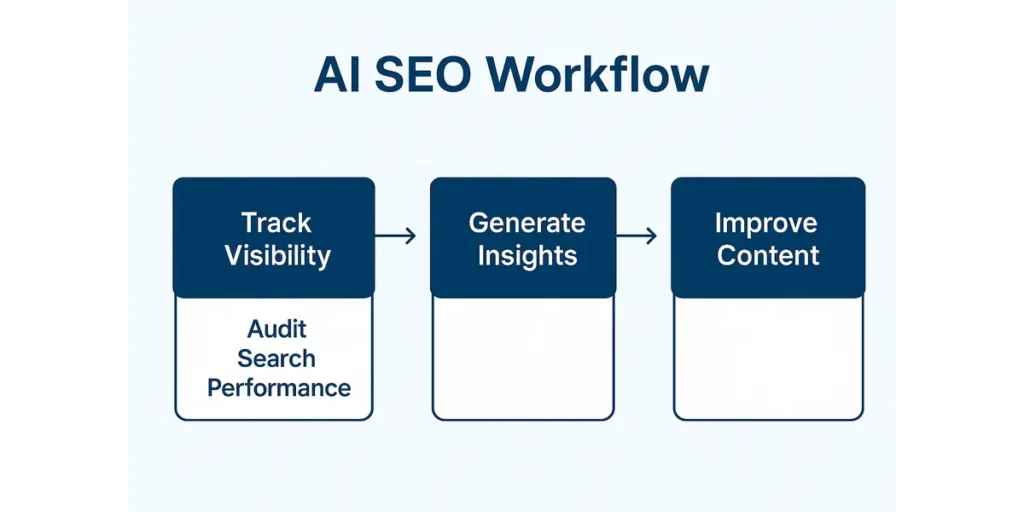
So where do you begin in this new era of AI-driven visibility? Unlike traditional SEO, which relies on keyword tracking and backlinks, AI SEO is about understanding how AI models perceive, mention, and describe your brand. That’s where OMG AI steps in — providing the tools to make your brand more visible and positively represented in AI-generated content.
Follow these 5 essential steps to launch your AI SEO strategy with OMG AI:
1. Sign Up for OMG AI
Start by creating your account on the OMG AI platform. Once you’re in, you’ll gain access to a powerful suite of AI visibility tools, including:
- AI Brand Mention Dashboards: See exactly how often your brand shows up across ChatGPT, Gemini, Claude, Perplexity, and other leading LLMs.
- Sentiment Tracking: Monitor how your brand is being talked about — positively, negatively, or neutrally — across AI-generated content.
- Prompt Test Suites: Use real-world user-like prompts to simulate queries AI users might ask and see how your brand performs.
Think of it as Google Search Console — but for the AI era.
2. Run Your First AI Audit
Once you’re inside the platform, launch your initial audit. This will analyze:
- Presence: Are you being mentioned at all?
- Frequency: How often does your brand show up?
- Positioning: Are you the first suggestion, or buried under a competitor?
- Platforms: How do different AI models perceive and present your brand?
You’ll also get insight into how different phrasing, intents, or user personas impact the way your brand is surfaced in AI results.
3. Analyze the Gaps
The audit results will likely reveal areas that need attention. Specifically, identify:
- Missing Mentions: Are you completely absent from certain AI platforms or queries?
- Incorrect Information: Is AI pulling outdated or wrong data from unreliable sources?
- Negative Sentiment: Is the tone of AI-generated content harming your brand’s reputation?
Use this analysis to create a prioritized action plan focused on visibility, accuracy, and tone of voice in AI-generated outputs.
4. Optimize for AI Discovery
Now it’s time to take action based on the audit findings. Strategies include:
- Implement Structured Data: Use schema markup to help AI understand and surface your content accurately.
- Update Key Content Assets: Refresh your website, product pages, FAQs, and bios with clear, trustworthy, and concise information.
- Correct Misinformation: Reach out to sources that misrepresent your brand or publish clarification content to guide AI towards accuracy.
- Strengthen Authority Signals: Build digital credibility through consistent brand mentions, expert quotes, press coverage, and citations from authoritative sources.
The more structured and trustworthy your content is, the more AI will choose to surface it in answers.
5. Track Over Time
AI models evolve constantly — and so does your brand’s visibility within them.
- Use OMG AI to monitor monthly performance changes.
- Track shifts in brand sentiment, citation frequency, and AI model behavior.
- Benchmark against competitors and tweak your strategies in real time.
- Test new prompts and queries as user behavior evolves.
This isn’t a one-time task. AI SEO is a continuous loop of optimization, testing, and iteration.
Start strong. Stay visible. Stay relevant.
With OMG AI, you’re not just keeping up with the future of search — you’re helping shape it.
AI SEO vs Traditional SEO – What to Keep and What to Evolve
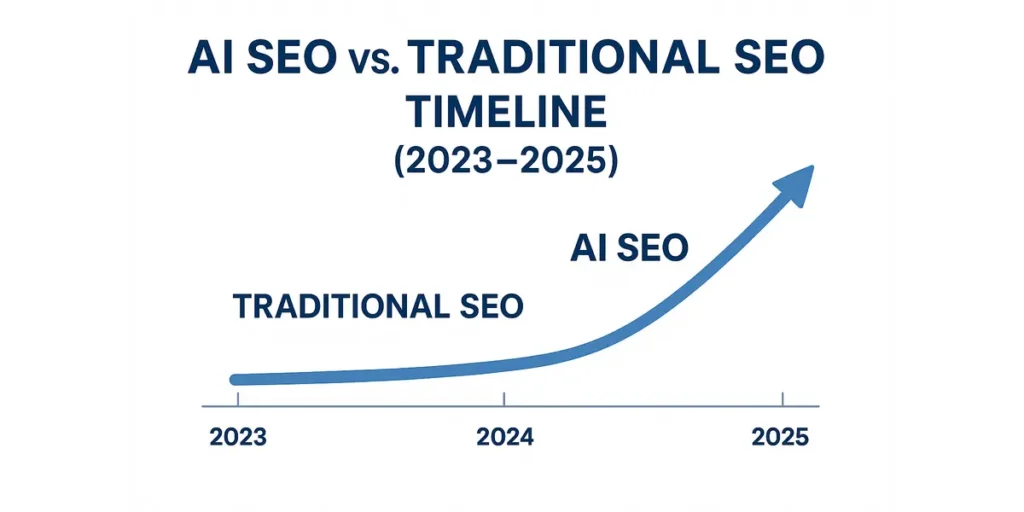
As digital behavior evolves, so must the way we optimize for visibility. Traditional SEO — focused on ranking pages in Google — is no longer enough in a world where users are turning to AI assistants like ChatGPT, Gemini, Claude, and Perplexity for immediate answers.
Enter AI SEO, also known as Generative Engine Optimization (GEO). This new approach optimizes your content to appear in AI-generated responses, not just search engine results pages (SERPs).
Here’s a deeper look at how these two strategies differ — and why you need both in your digital strategy:
Side-by-Side Comparison: Traditional SEO vs AI SEO (GEO)
| Feature | Traditional SEO | AI SEO (GEO) |
|---|---|---|
| Primary Platform | Google, Bing, Yahoo | ChatGPT, Gemini, Claude, Perplexity |
| User Intent | Search and browse | Ask and decide |
| Content Objective | Rank pages to drive clicks | Be cited or recommended in AI-generated answers |
| Optimization Target | Keywords, backlinks, on-page SEO | Brand mentions, authority signals, structured data |
| Measurement Tools | Google Analytics, Search Console, Ahrefs | AI visibility trackers like OMG AI, prompt-based audits |
| Key Metrics | SERP rankings, traffic, bounce rate | Mentions in AI, sentiment, response frequency |
| Content Format Focus | Long-form blog posts, keyword-optimized pages | Clear, concise, conversational, FAQ-rich content |
| Algorithm Influence | Google’s search algorithms (Panda, BERT, etc.) | AI model outputs (OpenAI, Anthropic, Google DeepMind) |
| Trust Signals | Domain authority, link profile, E-E-A-T | Structured data, brand clarity, topical trustworthiness |
| Speed of Visibility | Slow and dependent on indexing and backlinks | Instant — AI models can mention you without linking |
Why This Matters for Marketers
- Your traditional SEO may still bring traffic, but AI might recommend your competitors if you’re not present in its dataset.
- Being omitted from an AI-generated answer can cost you opportunities, even if your site ranks #1 on Google.
- Structured content and brand clarity are now crucial — not just for rankings, but for influencing AI behavior.
Key SEO Strategies to Combine Both Worlds
To future-proof your visibility, you need to blend both approaches:
- Continue building authoritative, keyword-rich content for search engines.
- Adopt conversational, FAQ-friendly, and trustworthy content that LLMs can easily understand and recommend.
- Use tools like OMG AI to track how AI models perceive your brand and adjust accordingly.
In the age of AI, it’s not just about being seen — it’s about being the answer.
FAQs About AI SEO and OMG AI
Q1. Is AI SEO replacing traditional SEO?
No. It’s evolving it. Traditional SEO still matters for organic traffic, but AI SEO adds a layer of relevance in how modern users consume information via LLMs.
Q2. How do I know if my brand is mentioned by AI?
Use a tool like OMG AI to track mentions, analyze sentiment, and understand your visibility across AI-generated answers.
Q3. Can I improve my AI visibility manually?
Yes, but it’s difficult without insights. Start by creating clear, authoritative, and structured content. Use tools like OMG AI to test, validate, and iterate.
Q4. What are examples of prompts I should test?
Examples include:
“Best [your industry] solution for startups”
“Top alternatives to [competitor]”
“Affordable [your product type] brands”
Q5. Is this useful for small businesses too?
Absolutely. AI doesn’t care about size — it cares about authority, trust, and clarity. A well-optimized brand can beat giants if it fits user context better.
Adapt or Get Left Behind
The next SEO revolution isn’t about stuffing keywords or tweaking metadata. It’s about becoming a trusted voice inside AI-generated answers.
As users shift from searching to asking — and from clicking to deciding — your brand’s visibility inside tools like ChatGPT, Gemini, Claude, and Perplexity becomes your new SEO battleground.
“The future of SEO isn’t about being seen — it’s about being chosen by AI.”
If your brand isn’t present when AI answers the question, you don’t just lose a click — you lose a customer. The stakes are higher, but so is the opportunity.
Ready to Make AI Work for You?
Track your AI visibility
- Monitor brand sentiment in real-time
- Benchmark against competitors
- Optimize for AI-first decision-making
Try OMG AI — and see how AI sees you.
This isn’t optional anymore. It’s your new competitive edge.


